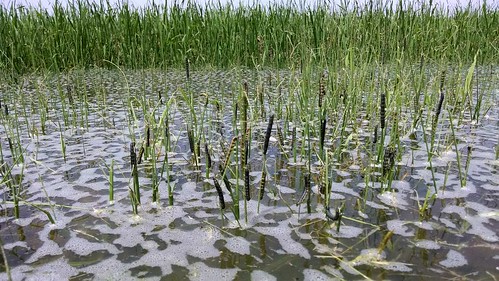Munching, marching fall armyworms making grass disappear
By the U of A System Division of Agriculture
Aug. 23, 2015
Fast facts
- Fall armyworms being reported in lawns, soybeans, pastures
- Management information also in Extension fact sheet FSA7083, ‘Managing Armyworms in Pastures and Hayfields.” http://www.uaex.uada.edu/publications/PDF/FSA-7083.pdf
(205 words)
(Newsrooms: with images of armyworms and damage at www.flickr.com/photos/uacescomm/14379153658 , www.flickr.com/photos/uacescomm/7996881987 )
CONWAY, Ark. – Kami Marsh’s phone is ringing again and at this time of year, it’s because fall armyworms are grazing down lawns and pastures.
“I’m hearing from homeowners who are seeing large groups of these worms and they’re a little agitated,” said Marsh, a Faulkner County extension agent for the University of Arkansas System Division of Agriculture. “One day their grass is there. The next day it’s gone.”
As their name implies, these caterpillars appear in large groups. It often seems as if they appear overnight and in their wake, they leave bare ground where lawns and pastures used to be.
Newly hatched fall armyworms are light green or cream-colored with a dark head and measures about one-sixteenth of an inch long. As it grows, it becomes darker in color and the head has a light colored “Y”-shaped mark down the front. In addition, the next-to-last abdominal segment has four small dark dots. A fully grown fall army worm is about 1.5 inches long.
Morning and evening are the best times to scout for fall armyworms, since those are the times they are most active.
For more information on controlling armyworms in pastures, see Extension fact sheet FSA 7083 “Managing Armyworms in Pastures and Hayfields” http://www.uaex.uada.edu/publications/PDF/FSA-7083.pdf.
Information about managing fall armyworms can also be found: http://www.uaex.uada.edu/counties/prairie/fall%20armyworm%20sheet%202015.pdf
Pursuant to 7 CFR § 15.3, the University of Arkansas System Division of Agriculture offers all its Extension and Research programs and services (including employment) without regard to race, color, sex, national origin, religion, age, disability, marital or veteran status, genetic information, sexual preference, pregnancy or any other legally protected status, and is an equal opportunity institution.
###
Media Contact: Mary Hightower
Dir. of Communication Services
U of A Division of Agriculture
Cooperative Extension Service
(501) 671-2126
mhightower@uada.edu
Related Links
